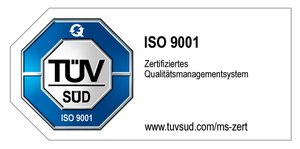Measurement errors
If differences are found in measurement results, i.e. the measured values, these are referred to as measurement errors. Measurement errors must be distinguished from the so-called measurement uncertainty. When using modern measurement technology, many different measurement errors can occur, which require different countermeasures. Therefore, the measurement error should always be investigated for its cause before countermeasures are initiated. Measurement errors are generally divided into three categories: Errors caused by the measuring system, errors caused by users and errors caused by environmental influences. Measurement errors caused by the measurement system can also be caused by a deterioration of the measurement accuracy due to wear. Users can generate measurement errors due to their different skills as well as due to a user-specific way of reading the values. Of course, incorrect handling of the measuring system also leads to user-caused measurement errors. Depending on the measurement method and the measured object, certain environmental influences and ambient conditions have more or less potential to lead to measurement errors. For example, fluctuating light conditions can affect optical measuring instruments and temperature fluctuations can result in the deformation of a measurement object.
We find the perfect solution for your project.
Contact us if you have questions to our services in the area of 3D metrology. We are looking forward supporting you in your success.



